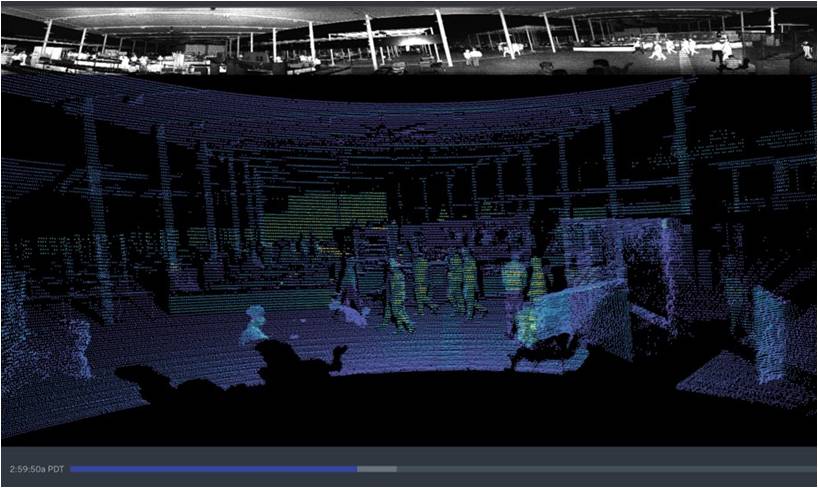Choosing LiDAR for Crowd Analytics
LiDAR is a superb choice for people-measurement and crowd analytics. It delivers accurate people-identification, near-perfect positioning, high frame rates, absolute privacy protection (no PII), great environmental flexibility, advanced object detection (so you can track cars not just people), and terrific coverage that makes for easy installations.
What’s not to like!
We work with a variety of LiDAR sensors and can help you pick the right LiDAR and even mix-and-match LiDAR with other sensor technologies to provide the most efficient coverage of your space.

-
Coverage is King
LiDAR really shines in a large, relatively open (no high obstructions) environments. The bigger you space and the less obstructed it is, the more likely LiDAR is going to be your ideal solution.
-
Privacy is Absolute
LiDAR is like radar. It just collects a point-cloud. No video. No image. No PII. None. Ever. Even the NSA couldn’t use these devices to figure out who people are.
-
Any Mounting / Any Environment
Unlike camera, LiDAR can be effectively wall-mounted or ceiling mounted. They don’t require lighting, and can work in almost any indoor or outdoor conditions.
-
Mix & Match
No one technology is right. Not only do we help you pick the right sensor for your requirements, the “right” sensor might be a mix and our DM1 platform lets you seamlessly mix and match sensors in a single environment.








